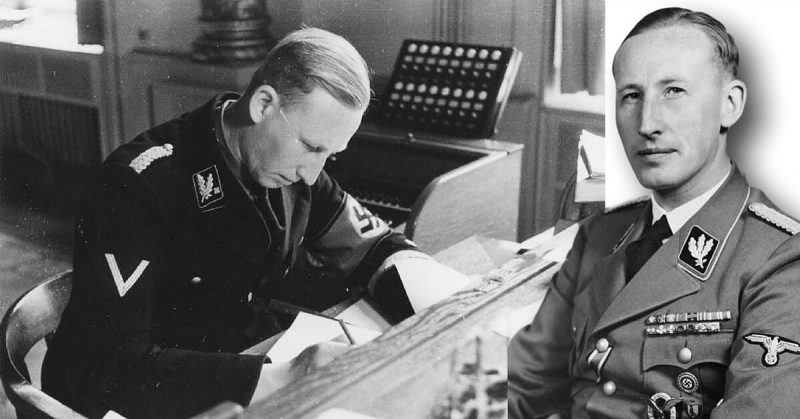Few men in all of human history have been responsible for such monstrous acts as Reinhard Heydrich. The head of the Gestapo, the Nazi secret police, he oversaw the Kristallnacht attacks on Jews in Germany and Austria and was one of the architects of the Holocaust. His assassination by British-trained Czech agents provoked one more atrocity in the name of the Nazi Adolf Hitler called “the man with the iron heart”.
Early Years
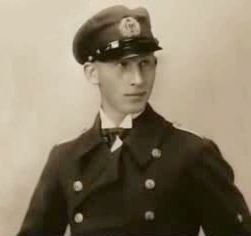
Born in Halle, Germany, on March 7th, 1904, Reinhard Heydrich’s life was affected early on by the anti-Semitism common in Europe at the time. A misunderstanding about his grandparents led people to assume that he had Jewish ancestry. As a result, he and his family faced anti-Semitic abuse despite not being Jewish. Heydrich’s response was to embrace that anti-Semitism, using hatred of Jews as a defense against the accusation that he was one.
Heydrich was too young to fight in the First World War, but in its aftermath, he joined the Märacker Freikorps, an anti-revolutionary right-wing militia, the Halle home defense volunteers, and then the Deutscher Schutz und Trutzbund, an anti-Semitic nationalist group. He had picked his side in a nation divided by the bitter fallout from the war.
A Troubled Career
In March 1922, Heydrich became an officer cadet in the German navy. Rumours of a Jewish connection followed him there, earning him the nickname “blond Moses”. But his skills overcame what many saw as a taint, and he received positive reports and promotions. By December 1930, he was a first lieutenant.
In April 1931, he was found guilty of breach of promise to an ex-girlfriend and discharged by a court under the navy’s strict rules of honour. The parents of his fiancée, Lina van Osten, refused to allow them to marry until he was employed again.
Rise Through the Nazi Party
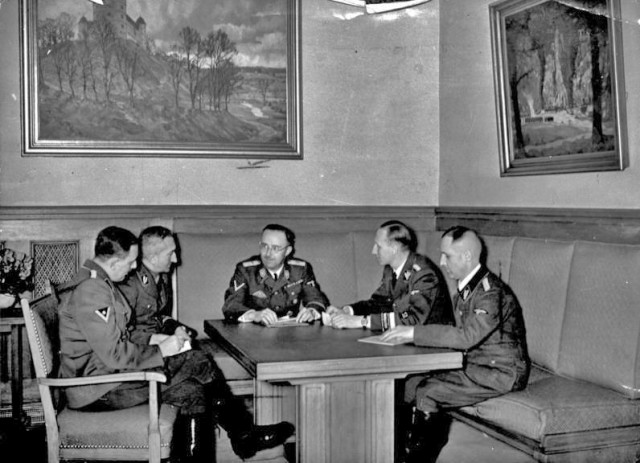
The van Ostens were Nazi party members, and Heydrich followed them into the party in June 1931. At the time, Himmler was planning a counter-intelligence division for the SS. After impressing Himmler in an interview, Heydrich got the job of running this service, starting on August 1st, 1931.
Heydrich once again did well in his work, and swiftly rose in rank. When he married Lina that December, he was made a Sturmbannführer (major) by Himmler as a wedding present. By June 1934, he had worked with Himmler to separate the SS from the SA and gone on to become head of the Gestapo. When internal party conflicts set the SA under Ernst Röhm against Hitler, Heydrich and Himmler forged evidence proving Röhm a traitor, leading to his death, along with that of other political opponents in the Night of the Long Knives.
By turning on Röhm, the godfather of his son, Heydrich ensured the gratitude of Hitler and the power of his own Gestapo.
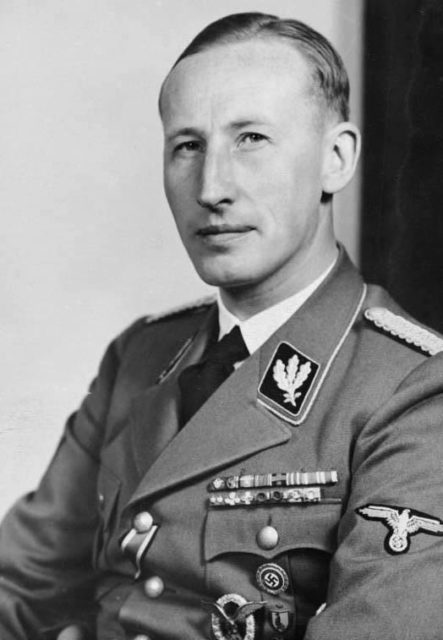
Kristallnacht and the Final Solution
In 1936, the Gestapo Law came into force, allowing the Gestapo to imprison or kill anyone as long as they were carrying out Hitler’s will.
Heydrich played a prominent part in organising the Kristallnacht (Crystal Night) in 1938, in which Jewish buildings were attacked and 30,000 Jews seized and sent to concentration camps. He also helped plan Operation Himmler, the fake attacks on German buildings used to justify the 1939 invasion of Poland, the event that triggered the Second World War in Europe.
In January 1942, Heydrich outlined his plans for the most infamous of all Nazi actions – the “final solution to the Jewish question”, remembered as the Holocaust. Chairing the Wannsee Conference, he took charge of planning the death camps that would wipe out millions of innocent lives.
The Assassination
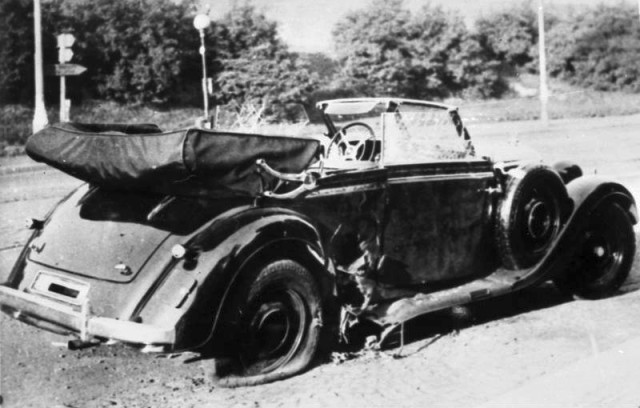
By now, Heydrich was Deputy Reich Protector of Bohemia and Moravia, effectively running this Nazi-occupied part of Czechoslovakia. The locals gave him nicknames such as “Hangman Heydrich” and “The Butcher of Prague” thanks to his brutal treatment of dissent, with hundreds killed and thousands sent to concentration camps.
The Czechs in exile wanted to punish the Nazis for their treatment of the country and to force the Allies to abandon the agreement giving Czech territory to Germany. To achieve this, two Czech agents trained by British special forces were sent to assassinate Heydrich – Jozef Gabčík and Jan Kubiš.
On May 27th, 1942, Gabčík and Kubiš ambushed Heydrich in his car, on the road from his château to Prague Castle. Heydrich was badly injured but initially survived.
Funeral in Berlin
Despite the best available treatment, including care from Himmler’s personal physician, Heydrich became ill with an infection. On June 3rd, his fever seemed to drop, and he sat up to eat breakfast. Suddenly he collapsed, going into a coma. On June 4th at 4.30am, he died. The autopsy found that he had died of infection, with no evidence of poisoning or surgical error.
On June 6th, a torch-lit procession took Heydrich’s coffin to Prague Castle, where it was publicly displayed. Then he was taken to Berlin for a further ceremony on June 9th, at which Hitler placed Heydrich’s decorations on his funeral pillow. He was buried at the Invalidenfriedhof in Berlin.
The Aftermath
On the day of the attack on Heydrich, a state of emergency was declared in the Protectorate of Bohemia and Moravia. At least 5000 innocent Czechs were killed in reprisals, including 3000 Jews from Terezín.
The Allies praised the assassination of Heydrich. The reaction of the Czech population was different. Instead of rising in resistance as the Allies had hoped, they suffered guilt and recrimination over the heavy cost in lives for a single man.
On June 10th, a force of Nazis entered the mining village of Lidice, which they mistakenly believed had been linked to the attack. They killed all the men, sent the women and children away to camps, and wiped Lidice off the map, flattening it so thoroughly that there was nothing left to see.
This outraged people around the world, and particularly the miners of Staffordshire in England, who rallied to help in the village’s rebuilding. But as with Heydrich’s previous atrocities, the harm could not be undone. Even from beyond the grave, he had been responsible for the deaths of innocents.
